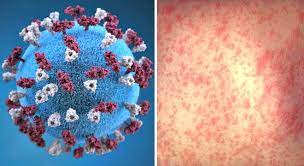A new study has revealed that the loss of biodiversity is the leading environmental factor behind the increasing risk and severity of infectious disease outbreaks. As the natural world is disrupted, diseases originating from wildlife are becoming more dangerous and widespread.
The findings, published in the journal *Nature*, show that among various “global change drivers” affecting ecosystems, the loss of species is the most significant contributor to heightened disease risk. Following biodiversity loss, climate change and the introduction of non-native species were also found to increase disease spread.
“The key takeaway is that biodiversity loss, climate change, and introduced species boost the risk of disease, whereas urbanization reduces it,” explained Professor Jason Rohr from the University of Notre Dame in the United States. His team examined nearly 1,000 studies on global environmental factors impacting infectious diseases, spanning all continents except Antarctica. The studies looked at both the severity and frequency of diseases across plants, animals, and humans.
The researchers evaluated five key global change drivers: biodiversity loss, climate change, chemical pollution, non-native species, and habitat loss. Four out of the five were found to exacerbate disease risk—habitat loss being the exception. The results held true across diseases affecting both humans and other organisms.
Habitat change seemed to lower disease risk primarily due to human migration toward cities. Urban areas tend to experience lower disease rates, partly because of better sanitation and health infrastructure, but also due to the reduced presence of wildlife. Rohr explained: “Urban environments, with their concrete landscapes, support fewer species. This reduction in biodiversity often leads to fewer diseases. Additionally, cities generally have better sanitation and healthcare facilities compared to rural areas.”
Interest in zoonotic diseases has grown since the Covid-19 pandemic, which some researchers believe originated from bats. Many other diseases currently raising alarms among global health experts, such as swine flu and avian flu, also have origins in wildlife. It’s estimated that three-quarters of emerging diseases in humans are zoonotic, meaning they are transmitted between animals and humans.
Past studies have indicated connections between these diseases and environmental changes, like global warming extending the range of malaria. However, it was unclear which specific environmental factors had the greatest impact. This study shows that climate change and chemical pollution can lead to habitat loss, which in turn may cause biodiversity loss, underscoring the complex relationships between these global change drivers.
Researchers suggest that reducing emissions, curbing biodiversity loss, and managing invasive species could all help to mitigate the spread of diseases. “We hope that our findings will support global efforts to control, mitigate, and monitor disease outbreaks,” the research team wrote.
For more coverage on the extinction crisis, follow biodiversity reporters Phoebe Weston and Patrick Greenfield on social media platforms like X to stay updated on the latest news and stories.
Supporting Independent Journalism
At a time when powerful interests seek to control the narrative, independent journalism is more important than ever. The Guardian is supported by readers like you, with no external interference. If you believe in the value of independent global journalism, consider joining our community and supporting our mission.















































